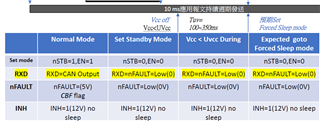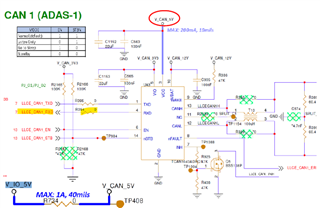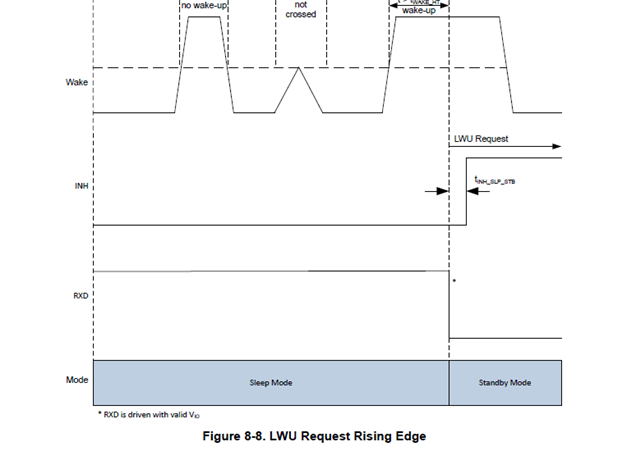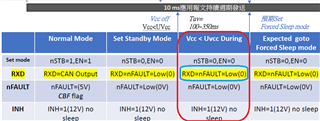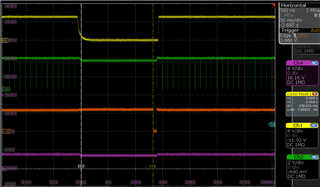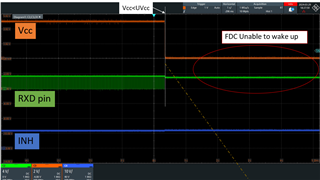Other Parts Discussed in Thread: TCAN1043
Hi AE,
1. Under the Sleep mode condition ( Vcc off ), Is it possible to wake up through RXD like with NXP TJA1043.
2. Please provide suggestions for me to resolve this case, Thanks. ( Refer to Pic3 )
3. By the way, In the 8.4.1.5 sleep mode, when the sleep mode is exited, need to base on the Vcc > Uvcc condition ?
Pic1 (NXP TJA1043)
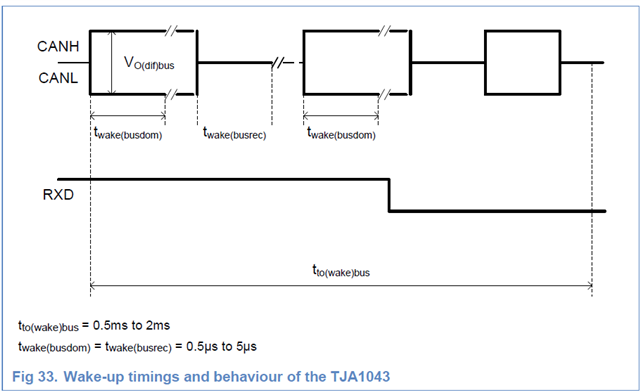
Pic2 ( Sleep mode condition )
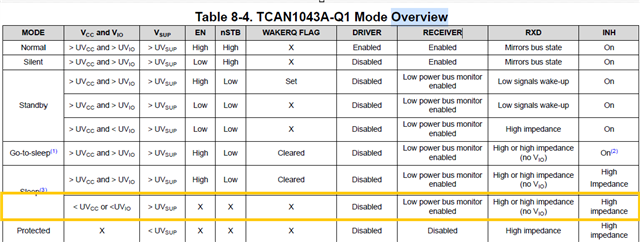
Pic3 ( schematic )
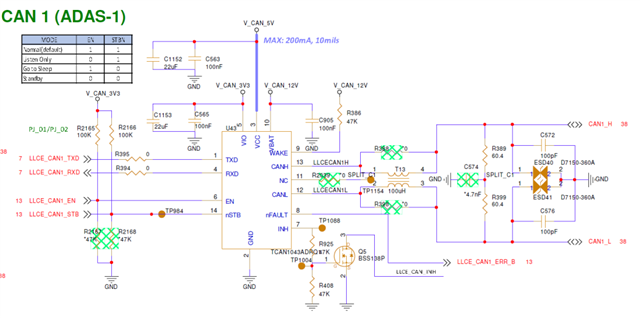
Pic4




